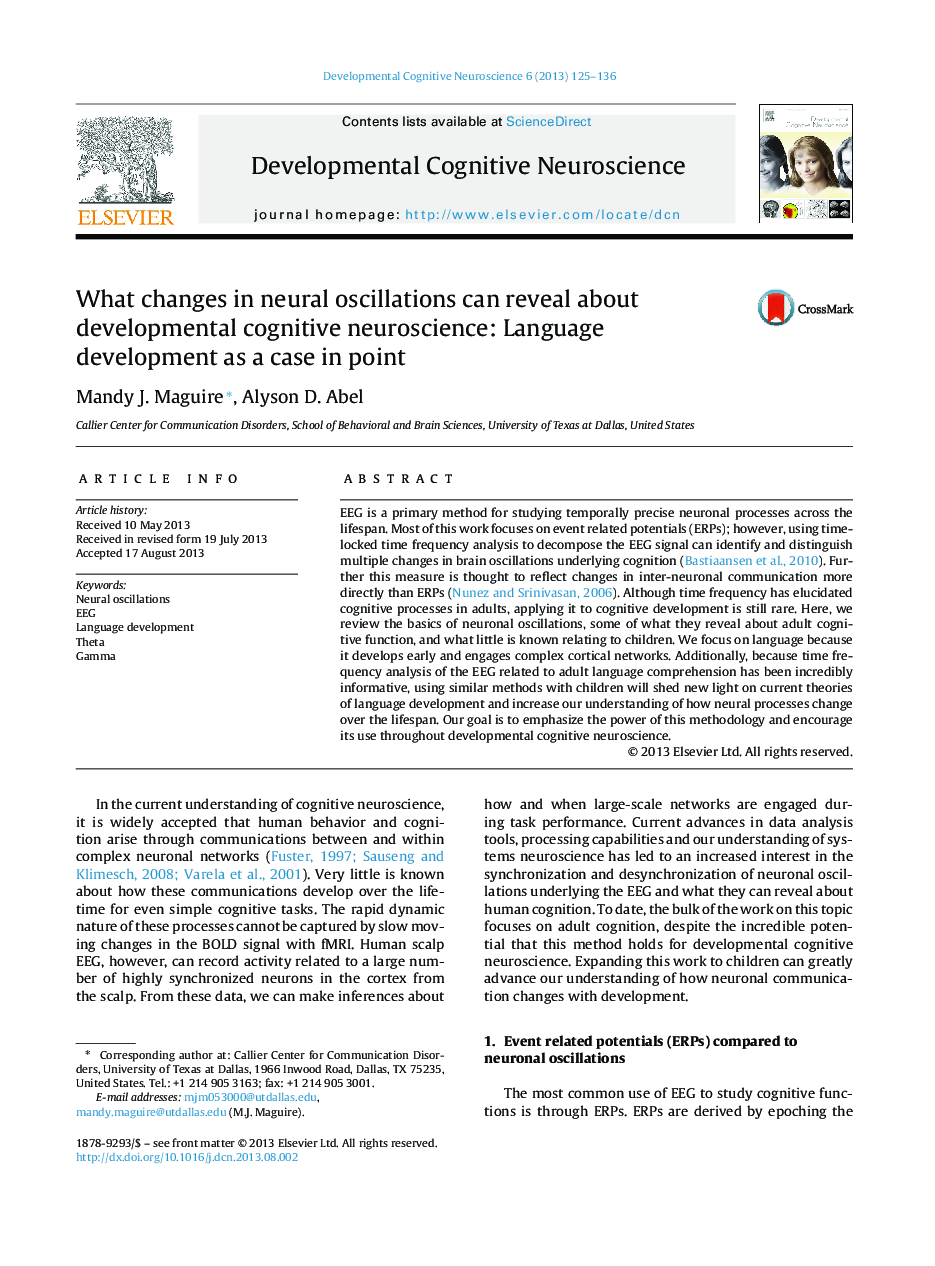| Article ID | Journal | Published Year | Pages | File Type |
|---|---|---|---|---|
| 6260938 | Developmental Cognitive Neuroscience | 2013 | 12 Pages |
EEG is a primary method for studying temporally precise neuronal processes across the lifespan. Most of this work focuses on event related potentials (ERPs); however, using time-locked time frequency analysis to decompose the EEG signal can identify and distinguish multiple changes in brain oscillations underlying cognition (Bastiaansen et al., 2010). Further this measure is thought to reflect changes in inter-neuronal communication more directly than ERPs (Nunez and Srinivasan, 2006). Although time frequency has elucidated cognitive processes in adults, applying it to cognitive development is still rare. Here, we review the basics of neuronal oscillations, some of what they reveal about adult cognitive function, and what little is known relating to children. We focus on language because it develops early and engages complex cortical networks. Additionally, because time frequency analysis of the EEG related to adult language comprehension has been incredibly informative, using similar methods with children will shed new light on current theories of language development and increase our understanding of how neural processes change over the lifespan. Our goal is to emphasize the power of this methodology and encourage its use throughout developmental cognitive neuroscience.
